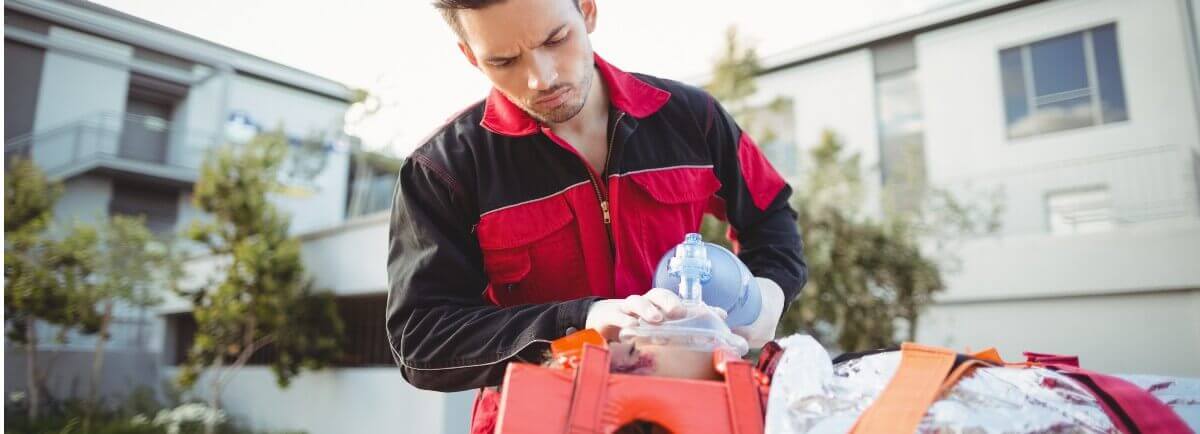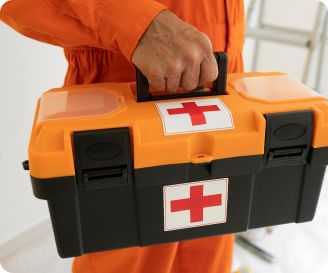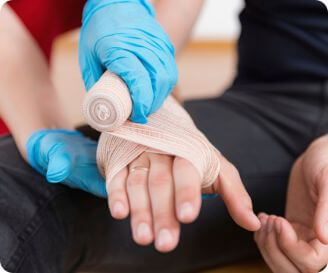
First Aid Basics: Immediate Response to Injuries
Accidents can happen anywhere—at home, work, or in public spaces. Knowing how to respond quickly to injuries can prevent complications and even save lives. Whether it’s a minor cut or a serious fracture, first aid can stabilize a situation until professional help arrives. In this guide, we’ll cover the basics of treating common injuries like cuts, burns, and fractures.
The Importance of First Aid

First aid isn’t just about bandaging wounds—it’s about acting fast and making the right decisions in emergencies. Quick and proper care can prevent further injury or infection, reduce pain and discomfort, improve recovery time, and even save lives in critical situations.
A well-stocked first aid kit and basic knowledge can make all the difference. Now, let’s look at how to handle specific injuries.
First Aid for Common Injuries
#1. Cuts and Bleeding
Small cuts are easy to handle, but deep wounds can lead to excessive blood loss or infection if not treated properly.
What to do:
1. Stop the bleeding – Apply firm pressure using a clean cloth or bandage.
2. Clean the wound – Use water to rinse out dirt. Avoid hydrogen peroxide for deep cuts.
3. Apply an antibiotic ointment – This helps prevent infection.
4. Cover with a bandage – Use a sterile dressing to keep the wound protected.
5. Seek medical help – If the cut is deep, won’t stop bleeding, or shows signs of infection (swelling, pus, redness), get medical attention.
#2. Burns
Burns range from mild redness to severe tissue damage. Quick action can reduce pain and prevent complications.
Types of burns:
- First-degree burns – Red skin, no blisters (e.g., sunburns).
- Second-degree burns – Blisters, pain, and swelling.
- Third-degree burns – Charred or white skin, deep tissue damage (medical emergency).
What to do:
1. Cool the burn – Run cool (not ice-cold) water over the burn for 10–15 minutes.
2. Do not use ice, butter, or ointments – These can worsen the damage.
3. Cover the burn – Use a clean, non-stick bandage.
4. Seek medical help – For burns larger than a palm, those on the face or joints, or third-degree burns, call emergency services.
#3. Fractures and Sprains
Broken bones and sprains can be painful and, if handled incorrectly, lead to further injury.
What to do:
1. Keep the injured limb still – Avoid moving the affected area.
2. Do not try to realign the bone – This can cause more damage.
3. Apply a cold pack – Wrap ice in a cloth and place it on the injured area to reduce swelling.
4. Support the limb – Use a splint or sling if available.
5. Seek emergency medical help – If the bone is visibly out of place, the person is in severe pain, or movement is impossible, call for immediate assistance.
When to Seek Emergency Medical Help
Some injuries require immediate professional care, and delaying treatment could worsen the condition. Call emergency services if you notice any of the following serious symptoms:

Excessive bleeding that won’t stop even after applying firm pressure for several minutes. Uncontrolled bleeding can lead to shock and requires urgent medical intervention.
Signs of shock, including pale or clammy skin, rapid heartbeat, confusion, dizziness, or fainting. Shock is a critical condition that can result from severe injuries and needs prompt attention.
Difficulty breathing following an injury, which could indicate damage to the lungs, airway obstruction, or an allergic reaction. Immediate medical assistance is crucial in such cases.
Severe burns, especially those that cover a large area, involve the face, hands, feet, or joints, or appear charred or white. Deep burns can lead to infections and require specialized treatment.
Open fractures, where the bone is exposed through the skin, or any fracture where the limb appears deformed or out of place. Attempting to realign a broken bone without medical expertise can cause further damage.
Head injuries, particularly if the person loses consciousness, experiences vomiting, severe headaches, confusion, or seizures. These may indicate a concussion or internal bleeding and require immediate evaluation.
Deep puncture wounds or animal bites, which carry a high risk of infection and may require tetanus shots or antibiotics.
When in doubt, it’s always safer to seek medical attention rather than risk complications. Acting quickly in emergencies can make a significant difference in recovery and survival rates.
Building a Safe and Prepared Workplace
Having a first aid plan at work can prevent minor injuries from turning serious. Businesses should ensure that first aid kits are accessible in key locations, employees receive regular first aid training, emergency contacts are readily available, and clear protocols are in place for handling injuries. Encouraging a culture of safety and preparedness makes a workplace safer for everyone.
First aid knowledge can make a life-saving difference. Being prepared means knowing what to do in the crucial moments after an injury. Whether at work or home, having a well-equipped first aid kit and understanding basic care techniques ensures better outcomes. If you haven’t yet, consider taking a certified first aid course—it’s a skill that could save a life.
By keeping these first aid basics in mind, you can act confidently in emergencies and provide immediate care when it matters most.
Ben Johnson is a dedicated Customer Success Executive at Safetymint. With a strong commitment to excellence, Ben works closely with customers to ensure they fully leverage the capabilities of Safetymint to its fullest potential, aiming to significantly reduce or mitigate safety risks and incidents.



